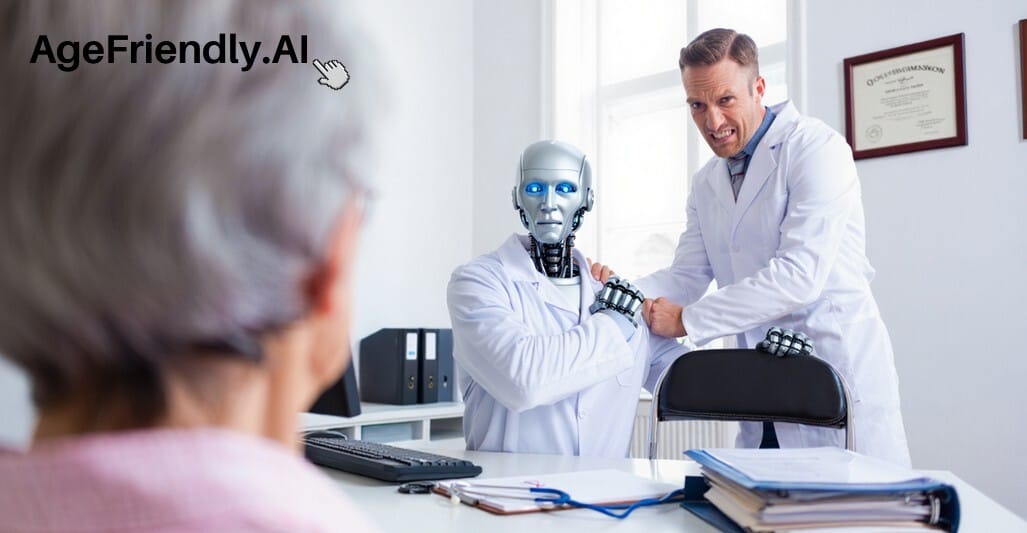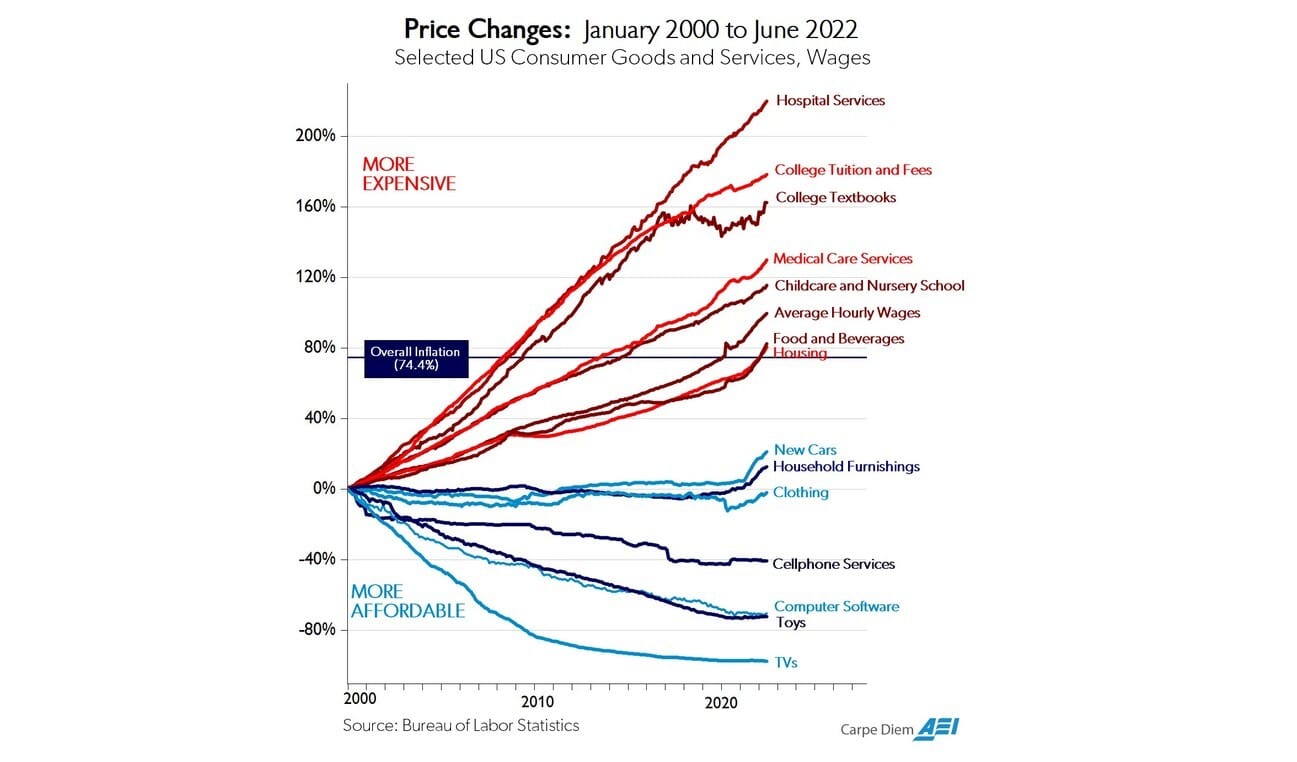- AgeFriendly.AI
- Posts
- 🩺 Can AI show more empathy than our doctors?
🩺 Can AI show more empathy than our doctors?
👋 Good morning from a pottery studio in Jingdezhen!
I'm writing to you after just having left Shanghai. Here are 3+1 observations from my two weeks there, each with possible implications for how we think about ageing and technology.
Cash is obsolete Physical money has virtually disappeared. Everyone—including older Shanghainese—pays via WeChat or Alipay. The integration across apps and services is seamless in a way we haven't seen in Australia.
Public squares as social hubs This was the real revelation. A medium-sized square near Jing'an Temple was packed with older people dancing, playing mahjong and socialising. The energy was so vibrant I assumed there was a festival. There wasn't, this is simply daily life (and I since experienced it again in more squares, at all times of the day). From what I saw, what made it work was a variety of affordable food stalls, group seating rather than isolated benches, and infrastructure designed for gathering rather than passing through. The lessons for Australian urban planning and aged care are significant, and I may expand on this in a future issue.
Robots in the hotel corridors My hotel used robots for all orders and deliveries, a small but telling sign of how embedded automation is becoming in everyday life.
+1 Quieter roads Irrelevant to ageing or AI, but I had to include this: Shanghai's streets are unusually quiet. With most vehicles now electric, the typical roar of traffic is gone, replaced only by the occasional honk. The cars themselves are mostly new, high-tech and, from what I've seen, significantly cheaper than their Australian counterparts.
I'm still in holiday mode—for now we're exploring traditional pottery studios around Jingdezhen—but I'll be writing more about ageing and innovation in China later this month when I visit tech developers and an aged care expo.
What we cover this week:
Can AI show more empathy than our doctors?
Tech entrepreneur blames care bottlenecks on regulation
Retail personalisation offers lessons for aged care marketing
Live translation earbuds could aid multilingual care delivery
Free workshop: practical GenAI skills for aged care teams
Claude's new Agent Skills helps you automate your work
LATEST DEVELOPMENTS
THE EMPATHY PROTOCOL
What if AI is better at compassion than we are?

I came across a very interesting article in The New York Times which is paywalled so I will try to summarise it as best as I can. In the article, emergency room doctor Jonathan Reisman describes how his assumptions about job security in medicine were challenged by large language models like ChatGPT. During medical school, Reisman learnt that delivering bad news to patients follows a structured protocol with specific guidelines: avoid medical jargon, pause after sharing the diagnosis, use phrases like "I wish I had better news" rather than "I'm sorry," and assess what the patient already knows. He found that following this memorised script made difficult conversations feel more natural and human, despite initially resisting the idea that compassion could be choreographed.
However, in one study, ChatGPT's responses to patient questions were rated as more empathetic and of higher quality than those written by doctors. Reisman then suggests that whether empathy comes from a human following a protocol or AI generating language based on patterns, what matters is the effective communication of care rather than the [continue reading]
TECH x CARE
A tech developer’s controversial theory on regulatory bottlenecks in care

In one of the most controversial articles I’ve read recently, tech entrepreneur Marc Andreessen argues that AI will not cause widespread unemployment because technological innovation is already restricted across most sectors of the economy. He presents data showing price changes across different economic sectors: products in less-regulated industries (blue) such as consumer electronics have decreased in price whilst improving in quality due to technological advancement, whereas heavily regulated sectors (red) including care, education, and housing have seen substantial price increases without corresponding technological progress.
The reason, in his words, is that “the sectors in red are heavily, regulated and controlled and bottlenecked by the government and by those industries themselves. Those industries are monopolies, oligopolies, and cartels, with extensive formal government regulation as well as regulatory capture, price fixing, Soviet style price setting, occupational licensing, and every other barrier to improvement and change you can possibly imagine”.
His conclusion is that regardless of AI's capabilities, its application will be limited by the regulatory frameworks already preventing technological change across most economic sectors, thereby preventing the displacement of workers that technology critics predict. So, whether this is an optimistic or a pessimistic conclusion depends entirely on your perspective.
LESSONS FOR AGED CARE
Retail got personal. Aged care needs to catch up.
Retail companies are using AI and real-time data to deliver personalised marketing at a level that was not practically possible several years ago. During a recent webinar by Eagle Eye, executives described how they have transformed traditional loyalty programmes into systems that tailor experiences based on individual customer data (such as Petco's approach of creating profiles for both pet owners and their pets to surface breed-specific food recommendations and send reminders for vet appointments).
This same level of sophisticated targeting is becoming necessary in aged care marketing due to a significant generational shift in decision-making power. Millennials, unlike Generation X before them, do not hold financial control over their boomer parents' care (in the US boomers collectively hold $76.2 trillion in wealth compared to millennials' $13.5 trillion). Additionally, 45.6% of boomers consider four out of five the lowest acceptable rating for a healthcare provider, indicating higher standards for care. More stats in this article.
This contrasts with Generation X's relationship to their Silent Generation parents, where Gen X held nearly twice the generational wealth and took a more authoritative role in care decisions. Aged care providers now need to direct marketing towards the elderly patients themselves as primary decision-makers whilst recognising millennials as influencers and facilitators, requiring differentiated messaging strategies similar to the personalisation approaches we see in retail.
(And here’s a very long but quite interesting philosophical article from Aeon that examines the limitations of choice-based freedom, from how it can promote individualism over collective action to how it fails to address structural inequalities, ultimately questioning whether there are better ways to conceive of freedom beyond selecting from menus of options.)
TECH FOR AGED CARE
Live, in-ear translation with AI earbuds

Launched last week, Apple's new AirPods Pro 3, add live, in-ear translation. The feature lets users speak naturally and hear instant translations. In Australia, they're priced at $429. Since arriving in China, I bought a pair of translation earbuds (notably available before Apple released theirs) for $26, and they work fine—especially for translating what other people are saying. The two-way exchange is still a little awkward as the other person has to look at my screen waiting for the app to translate, but as you'll see in the promo video, this is a problem even Apple hasn't resolved yet.
Irrespective of country of origin and price tag, I see real-time translation becoming increasingly achievable and part of everyday life. I reckon we're very close to seeing aged care staff using similar devices to communicate with clients and families from diverse linguistic backgrounds.
TRAINING
🎓 Practical AI Skills for Daily Operations in Aged Care
Hosted by Ageing Australia, I'll be presenting a free 2.5-hour workshop on the GenAI tools I'm using (think ChatGPT, Claude, NotebookLM, Gamma and more) with examples tailored to aged care and community services. We'll cover essential prompt engineering techniques, adoption strategies, and best practices for responsible AI use, also addressing common concerns around privacy and accuracy.
No prior AI experience required. This workshop is suitable for beginners through to those with some existing AI knowledge who want to deepen their skills.
WORKING WITH AI
🧩 Teach Claude your working style
Anthropic has introduced Agent Skills, a feature that allows Claude (in paid versions only) to access specialised instructions, scripts, and reference materials for specific tasks. Skills are stored as folders containing markdown files with instructions, executable code, and resources that Claude loads only when relevant to a task. Users can create custom skills without technical knowledge by describing their workflow to Claude's built-in "skill-creator" tool, which generates the necessary folder structure and files.
You can use the skill-creator tool to build your own skills, such as a meeting summariser that structures notes in your organisation's format, a proposal generator using your templates and pricing structures, an email drafter that writes in your communication style with saved templates, or anything else you can think of. (And you can always ask Claude for ideas on how to use it!)
I’m not here to hype trends. I’m here to explore the changes shaping ageing—technology included—and to share ideas you can apply in practice. Whether you’re exploring new tools, rethinking services, or looking ahead to what’s coming, I hope you found something here worth your time.
Feel free to forward this to your network or share it with your team.
See you next Tuesday,
George

I'd love to hear your thoughts—feel free to connect with me on LinkedIn or check out my website to learn more about my work.

